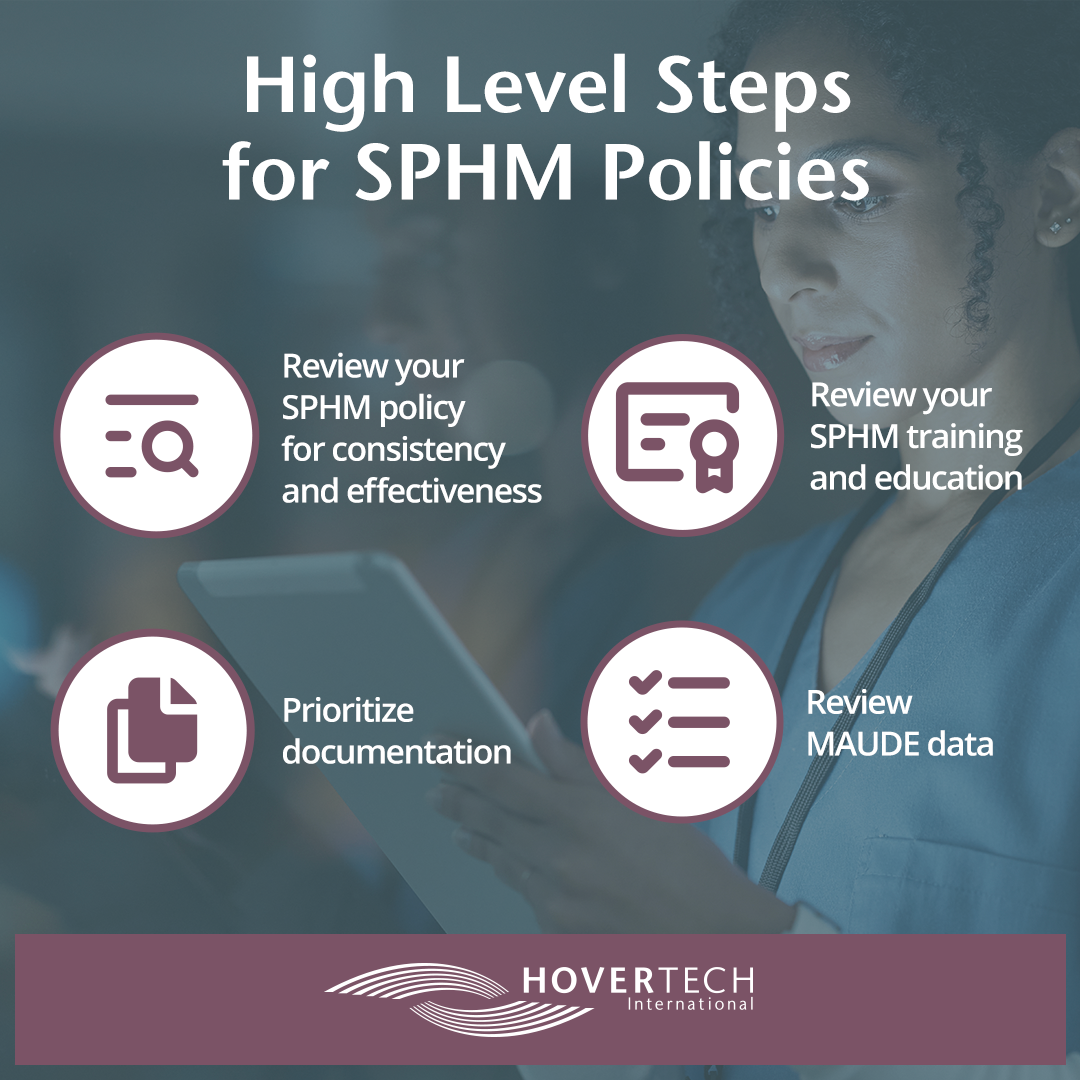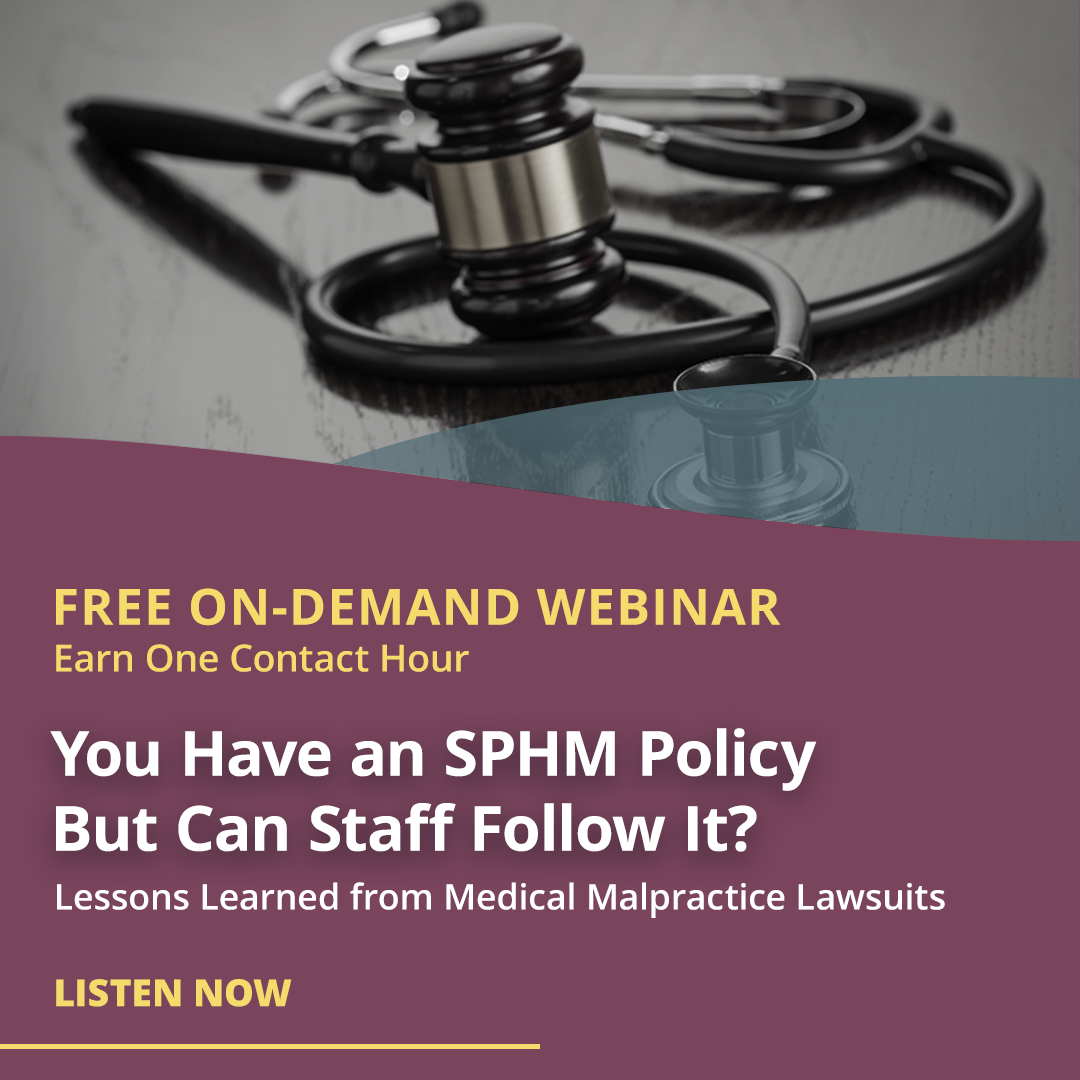You Have an SPHM Policy – But Can Staff Follow It? Lessons Learned from Medical Malpractice Lawsuits
Medical malpractice lawsuits are on the rise. They can shed light on safe patient handling and mobility (SPHM) practice and policy weaknesses – weaknesses capable of putting nursing licenses and entire organizations on the line and even on the stand. Discover tips for assessing and improving your SPHM protocols and procedures and listen to the full on-demand webinar to earn one contact hour.
The following is a summary of an actual case. Details have been changed to maintain the confidentiality of all involved parties.
In 2014, a Certified Nursing Assistant (CNA) at along-term care facility was completing rounds on her assigned hall. Like most nights, she single-handedly transferred a resident from a bed to a recliner using a seated sling and a floor-based mobile lift. Limited staffing didn’t realistically allow her to enlist another CNA or nurse-on-duty to assist even though – by some accounts – the facility’s SPHM policy called for it. Nursing staff was well-aware that this was the case; CNAs under their supervision routinely used mechanical lifts without the help of another caregiver.
On this night, though, the resident’s head reportedly bumped the headrest of the recliner during the transfer, resulting in a cut, bump, and bruise. The managing nurse was called, evaluated the injury, and applied an ice pack. Per protocol, the resident was placed on the facility’s neuro check schedule; the CNA clocked out at the end of her shift and left. In the hours following, the resident began showing signs of trauma. She was transferred to a hospital where she died of multiple subdural hematomas. Given the level of trauma, it is doubtful that the CNA’s report of the events was accurate.
WHAT HAPPENED NEXT?
The organization did not complete a thorough investigation or incident report. The CNA was fired for failing to follow the facility’s safe patient handling and mobility (SPHM) policy.
Within weeks, the deceased resident’s family filed a lawsuit. The CNA was not named as a defendant (in fact, within a month she took a job at a nearby long-term care facility); however, the long-term care facility parent corporation and managing nurse were. Among the allegations was failure to follow the Corporation’s SPHM policy and procedures on proper delegation and use of mechanical lifts.
Suddenly, the long-term care facility’s SPHM policy faced scrutiny, and administration discovered the extent to which their nurses were vulnerable and their SPHM policy flawed.
It’s worth noting, too, that the managing nurse on duty at the time of the adverse event was named in the lawsuit even though she had not provided direct patient care. While organizations typically bear a significant portion of a negligence burden, nurses in supervisory roles can be personally named in professional liability lawsuits due to management or administrative responsibilities such as hiring and educating staff, and their role in making patient or resident care assignments.
If you are a nurse in a leadership role, then, it behooves you to make sure you have an SPHM policy that can be understood and readily implemented via processes and procedures that staff can actually follow.
THE POWER AND IMPORTANCE OF POLICIES
There’s a Florence Nightingale quote I return to often:
“Let whoever is in charge keep this simple question in her head…how can I provide for this right thing to be always done?”
How can I provide for this right thing to be always done?
My deeply-held belief: Healthcare professionals can increase the chances that the right thing is done through standardized and consistent protocols and practices supported by well-written policies, along with adequate (ideally optimal) staffing levels!
To this end, I encourage every healthcare professional to check themselves for a false opinion of policies as mere formalities or headaches, and to instead see and seize policies for their full potential. Policies can help ensure consistency of care. They help to guide caregivers in moments of critical decision-making. They facilitate education and training. They help set and communicate clear expectations for how care is provided for every patient and resident. And, yes, they can provide a level of protection in the event of a lawsuit.
That is, if they’re done right and implemented on units and halls.
Below, I’ll offer a few high-level steps for making sure your facility’s SPHM policies don’t merely stand up to scrutiny, but offer consistent, clear guidelines for team members tasked with following them. But first, back to our case study.

THE SPHM POLICY DISCONNECT
As the long-term care facility prepared for trial, lawyers discovered sobering realities within its SPHM policy:
- The policy as written had never been fully implemented.
- It was incompatible with practical staffing realities.
- Its conditional logic didn’t always add up. Take the events of the incident: The policy did not actually mandate two staff for mechanical lift transfers; rather, it gave inconsistent and confusing guidelines across sit-to-stand and use of mobile/floor-based lifts and other SPHM equipment.
- The policy’s origins were unknown to staff and some details were out of step with current industry best practices.
TIGHTENING YOUR SPHM POLICY AND RELATED PRACTICES
No healthcare facility or nurse wants to find themselves in the scenario outlined above. Consider these four key steps to ensuring your SPHM policy holds up against scrutiny and consistently advances the safety and wellbeing of your patients and your team:
Review your SPHM policy for consistency and effectiveness. Is it working?
Ask yourself: Are procedures and processes (including mobility assessments) outlined in your SPHM policy actually in practice on floors and at bedsides?
How would the policy hold up against scrutiny if a patient or resident was injured or died during use of a lift or sling?
Is an incident investigation process consistently followed?
Prioritize documentation.
It’s impossible to overemphasize the importance of related documentation. Remember, healthcare records are legal documents. Imagine standing in front of judge and jury and explaining an incident. You want to make sure you have documentation clearly showing that care met the SPHM policy standard, every time.
Review your SPHM training and education.
Is SPHM equipment, including slings, easily accessible and in good working order? Are the right types and sizes of slings typically assigned to patients and residents?
How do you ensure and document competency? Do education, training, and checklists for SPHM equipment help ensure competency?
Do you include ongoing audits and observations by unit or hall managers as part of your competency plan?
Review MAUDE data.
MAUDE – short for Manufacturer and Facility User Device Experience– is publicly-available data on adverse experiences with medical equipment including patient lifts and slings. Available on the U.S. Food and Drug Administration website, MAUDE can offer astute readers insights into device user errors, manufacturer nuances, and other patterns among patient and resident events nationwide – information that can dramatically inform your policy, overall clinical choices, and equipment selections.

Of course, this is just the tip of the iceberg. Aligning SPHM policies with day-to day health care practices – and protecting yourself against liability in the process – is a complex topic. Learn more and earn one free contact hour by listening to the full on-demand webinar.
Teresa Boynton, MS, OTR, CSPHP

Currently an independent consultant, from 2015 to 2018 Teresa Boynton, MS, OTR, CSPHP worked for Hill-Rom, assisting healthcare facilities in building safe patient handling and mobility (SPMH) programs. Prior, Teresa worked for Banner Health for 26+ years where she focused on preventing caregiver injuries, resolving workers’ compensation claims, and implementing a standardized SPHM and fall prevention program. In 2003 she began work on what became the Bedside Mobility Assessment Tool (BMAT). She and nurse colleagues developed BMAT 2.0 and published an article and support tools in the July 2020 issue of American Nurse Journal. Teresa received a 2020 Innovation Award from the National Board for Certification in Occupational Therapy for her work on developing and implementing BMAT and related SPHM programs. She is a longtime member of the Association of Safe Patient Handling Professionals (ASPHP). In 2000, Teresa took a sabbatical and worked as a paralegal for a medical malpractice defense attorney where she gained a greater appreciation for standardized practice and accurate documentation – an experience that informs and energizes her work to this day.

